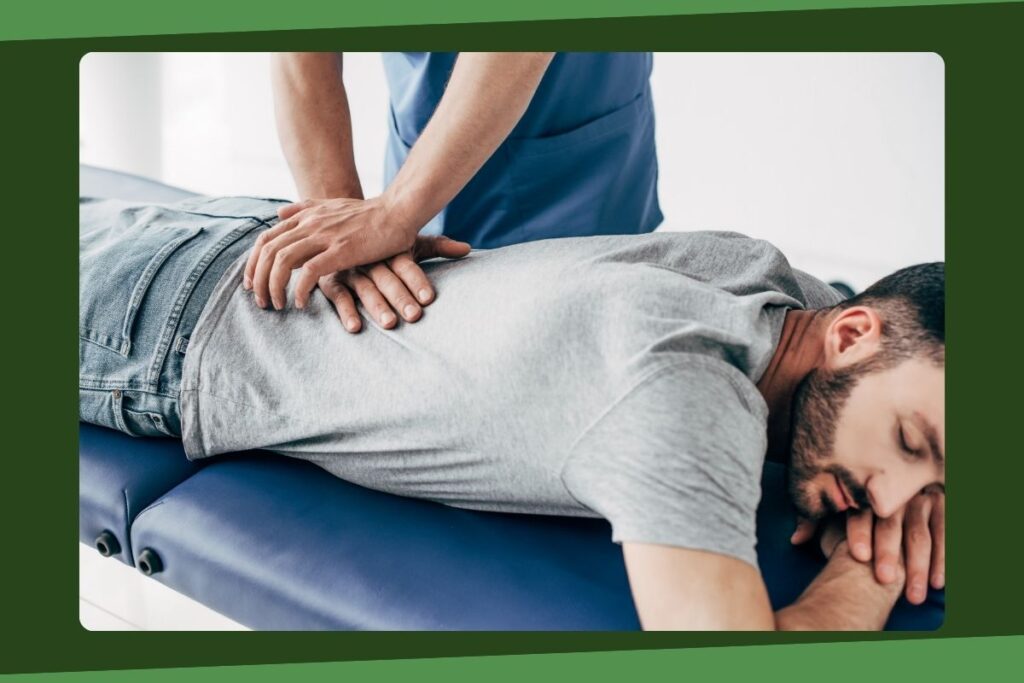Deciding On Spinal Decompression and Traditional Back Treatments
Wiki Article
Discovering Spinal Decompression Methods: What You Required to Know for Better Spine Care
Spinal decompression strategies are important for people experiencing chronic back pain or spinal problems. These methods range from non-invasive therapies to surgical choices, each designed to eliminate pressure on the spinal column. Comprehending these techniques is very important for efficient spine care. Not all techniques are ideal for every condition. The subtleties behind each approach warrant better evaluation, as they can greatly influence recuperation and general wellness outcomes. What factors should one consider before choosing?Understanding Spinal Decompression
Although spinal decompression might appear complicated, it basically refers to a range of methods intended at reducing pressure on the spinal cord and surrounding nerves. Family Chiropractic. The back is a vital framework that supports the body and secures necessary neurological paths. When compression happens, it can bring about pain, discomfort, and minimized flexibility. Recognizing spinal decompression involves recognizing the reasons of this stress, such as herniated discs, spinal stenosis, or injury. By attending to these underlying problems, decompression strategies look for to recover proper alignment and feature. This process can involve both surgical and non-surgical approaches, customized to individual person demands. The goal is to improve the lifestyle by easing discomfort, boosting posture, and promoting much better movement. As understanding of spinal wellness expands, the importance of comprehending spinal decompression comes to be significantly pertinent for those looking for efficient treatment choicesCommon Spinal Decompression Methods
Spinal decompression techniques encompass a series of approaches made to alleviate pressure on the spine and its connected structures. These techniques can be broadly classified into non-surgical and surgical approaches. Non-surgical approaches include spinal grip, where gentle drawing forces are put on the back, producing space between vertebrae. This can reduce nerve compression and promote healing. Chiropractic care adjustments likewise fall under this classification, focusing on realigning the back to improve function.Surgical decompression strategies include procedures such as laminectomy, where a section of the vertebra is eliminated to alleviate pressure on the spinal cable or nerves. Discectomy, another surgical option, requires the removal of herniated disc product. Additionally, minimally invasive methods, like endoscopic discectomy, are gaining popularity as a result of their reduced recovery times. Each method offers a specific function and might be picked based on individual client demands and the severity of their spinal condition.
Advantages of Spinal Decompression
When taking into consideration the various approaches to handling spinal concerns, the benefits of spinal decompression methods come to be evident. These techniques intend to alleviate pressure on the spinal discs and nerves, which can alleviate discomfort and boost total spinal health. By creating room in between vertebrae, decompression advertises improved blood circulation and nutrient circulation to the impacted locations, facilitating recovery and healing.In addition, spinal decompression can assist bring back the all-natural alignment of the spinal column, possibly reducing the danger of future injuries. Patients frequently report raised mobility and flexibility try these out following treatment, leading to an improved lifestyle. The reduction in pressure can reduce signs associated with conditions such as herniated discs, sciatica, and spinal constriction, using a non-invasive option to more invasive procedures. In general, spinal decompression techniques offer a series of physical and healing advantages, making them a beneficial part of comprehensive back care.

That Can Profit From Spinal Decompression?
Individuals experiencing chronic neck and back pain, herniated discs, or spinal stenosis might find substantial alleviation through spinal Read Full Report decompression strategies. This non-invasive treatment can be specifically useful for those experiencing nerve compression symptoms, such as prickling, numbness, or weak point in the limbs. Professional athletes recuperating from injuries or people with degenerative disc illness might likewise consider spinal decompression as a sensible choice for discomfort administration and boosted wheelchair.Prospects for spinal decompression typically include those who have actually not responded well to traditional treatments, such as medications or physical treatment. It can likewise function as a choice for patients looking for to avoid surgical treatment. Generally, spinal decompression techniques can supply a healing option for numerous people encountering spinal problems, helping them gain back a greater quality of life and functional capability. Consulting a health care professional is important to identify the viability of this therapy for details problems.
Factors to consider and Safety Measures for Spinal Decompression

The kind of spinal decompression method-- whether surgical or non-surgical-- must line up with the individual's certain condition and total health and wellness status. Surveillance during the procedure is crucial to attend to any damaging reactions promptly. Individuals should additionally comprehend that spinal decompression is not a one-size-fits-all solution; an extensive therapy strategy may consist of physical treatment or way of life adjustments to support recovery. Generally, sticking to these look here safety measures can substantially enhance the effectiveness of spinal decompression therapies and promote excellent spinal column wellness.

Often Asked Questions
How much time Does a Normal Spinal Decompression Session Last?
A common spinal decompression session lasts in between 30 to 45 mins. This duration permits for ideal therapy while making sure the individual stays comfortable and receives adequate focus to their details spinal issues and needs.Can Spinal Decompression Be Done in your home?
Spinal decompression can be carried out in your home with particular exercises and tools, such as inversion tables or lumbar braces. Consultation with a medical care specialist is advised to ensure security and effectiveness in individual instances.Is Spinal Decompression Painful?
Spinal decompression is usually not painful; however, individuals might experience light discomfort or pressure throughout the treatment. Pain levels can differ based on the individual's problem and the method used for decompression.The Amount Of Procedure Are Normally Needed for Relief?
Commonly, individuals might need 6 to 10 sessions of spinal decompression treatment to experience considerable alleviation (Top Chiropractor). The precise number can differ based on specific conditions and actions to therapy, necessitating customized analysis by healthcare experts.Exist Any Kind Of Age Limitations for Spinal Decompression?
There are normally no strict age limitations for spinal decompression treatment. Viability may depend on individual health and wellness conditions and the certain strategy used, so examination with a health care specialist is advised for tailored advice.Spinal decompression methods are crucial for people experiencing chronic back pain or spinal concerns. Spinal decompression may appear complex, it basically refers to a variety of strategies aimed at minimizing pressure on the spinal cable and surrounding nerves. When taking into consideration the various strategies to handling spinal problems, the advantages of spinal decompression strategies come to be apparent. Individuals experiencing from chronic back discomfort, herniated discs, or spinal constriction might locate considerable relief via spinal decompression techniques. In general, spinal decompression methods can give a healing choice for different individuals encountering spinal problems, assisting them regain a greater top quality of life and functional capacity.
Report this wiki page